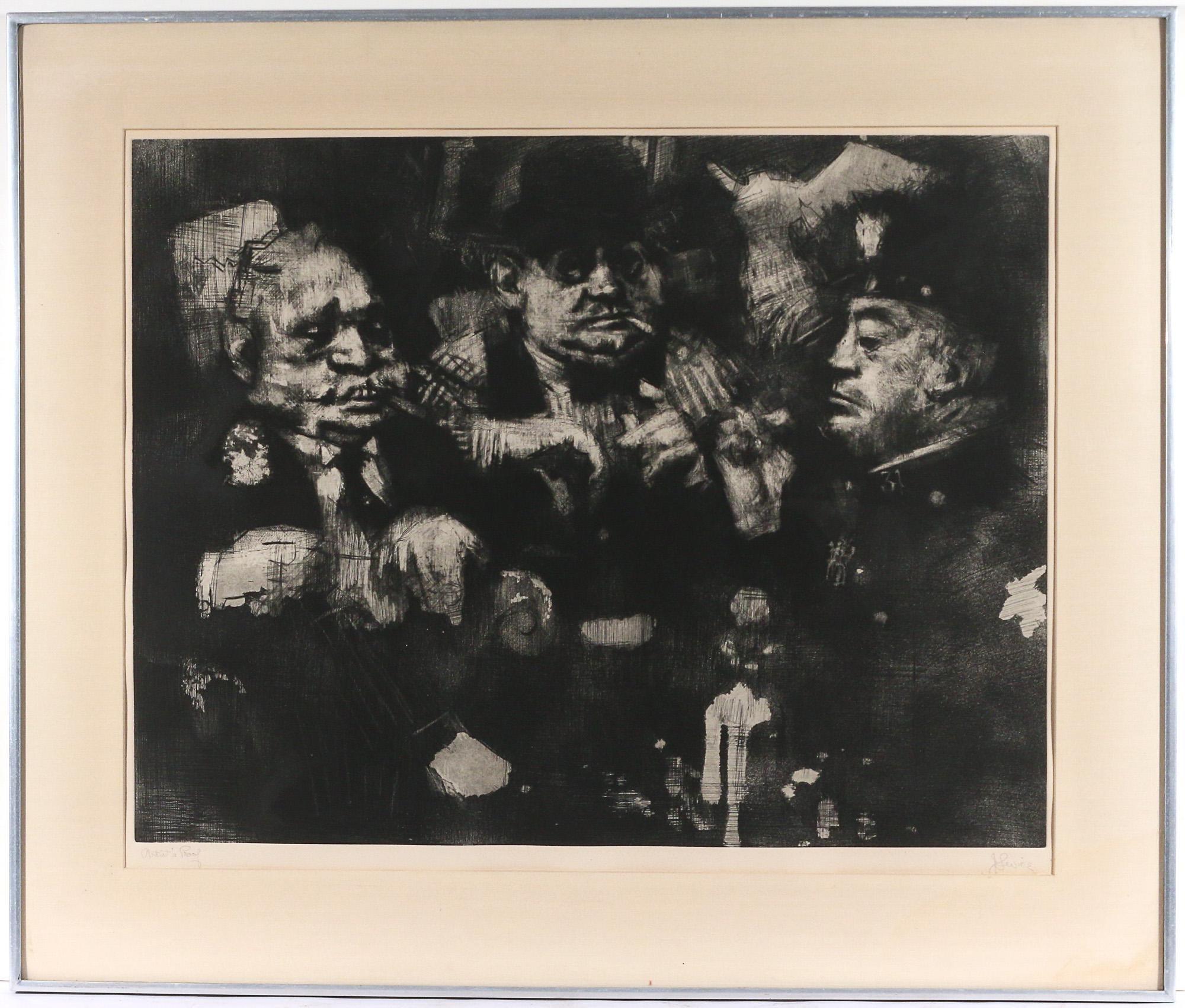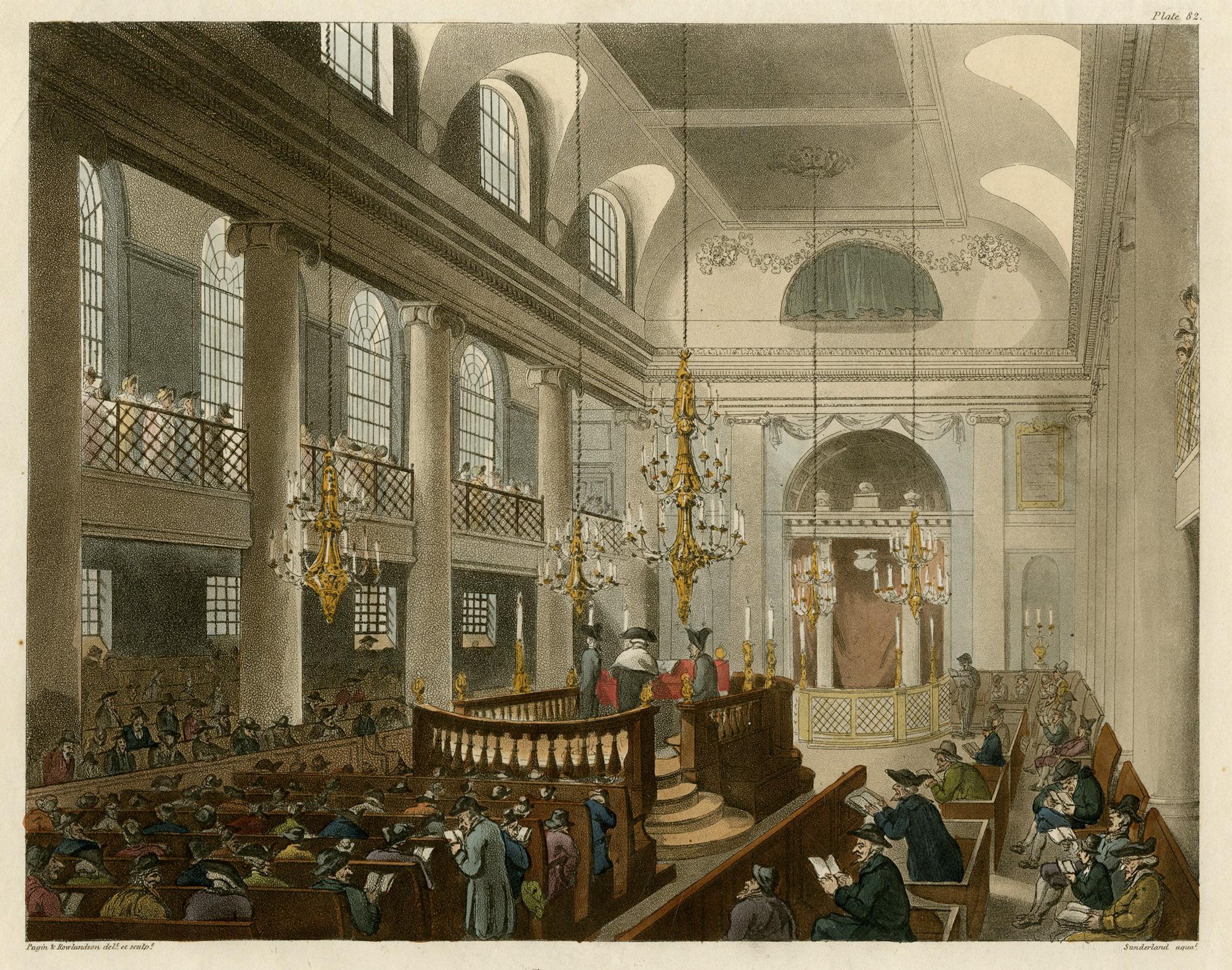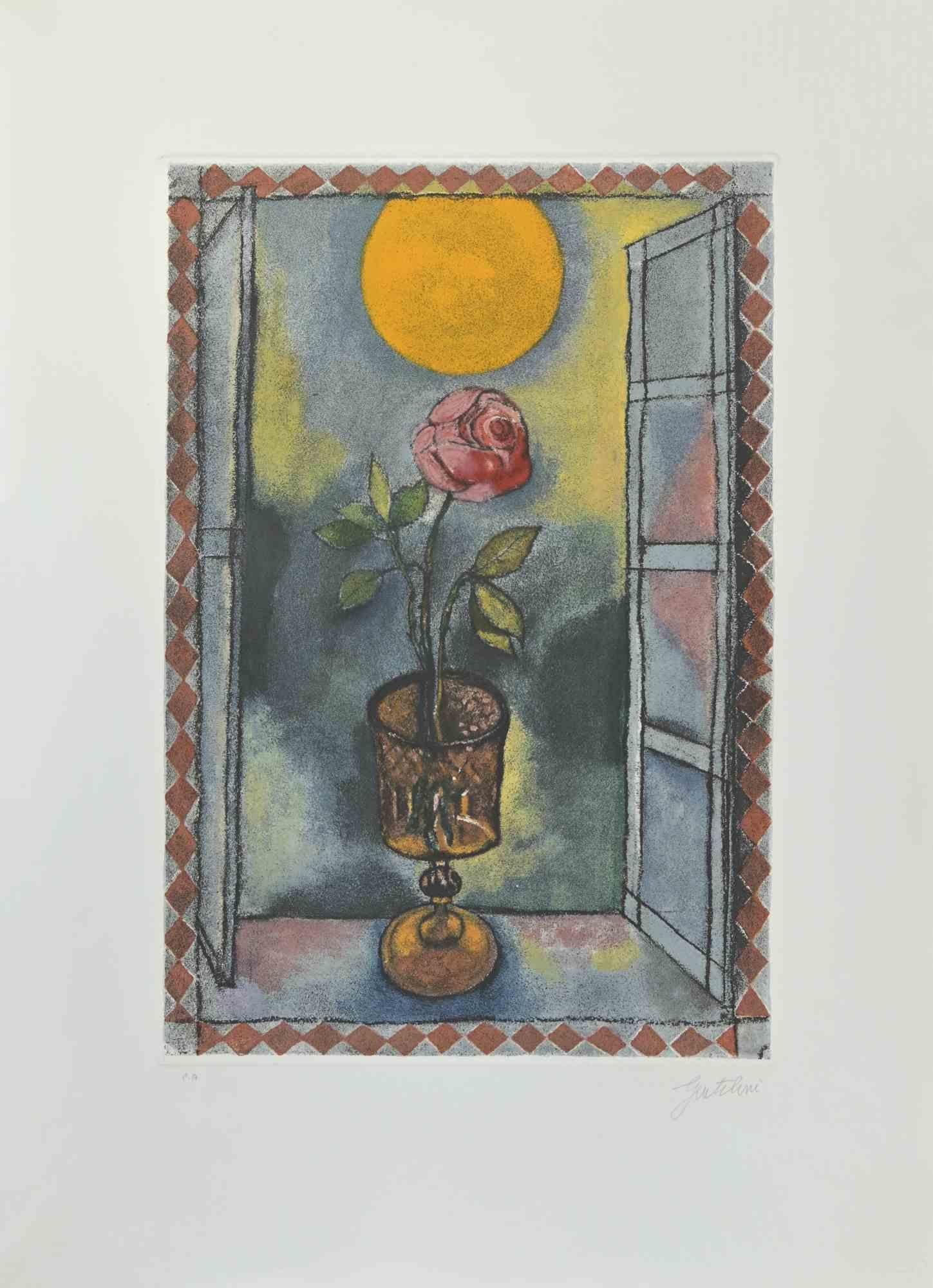Items Similar to Don Juan
Want more images or videos?
Request additional images or videos from the seller
1 of 6
Louis IcartDon Juan1928
1928
About the Item
Aquating Engraving
Image Size: approx. 20 1/4 x 13 3/8
Framed Size: 28 x 20.5 inches
Pencil Signed Lower Right
Louis Justin Laurent Icart was born in Toulouse in 1890 and died in Paris in 1950. He lived in New York City in the 1920s, where he became known for his Art-Deco color etchings of glamourous women.
He was first son of Jean and Elisabeth Icart and was officially named Louis Justin Laurent Icart. The use of his initials L.I. would be sufficient in this household. Therefore, from the moment of his birth he was dubbed 'Helli'. The Icart family lived modestly in a small brick home on rue Traversière-de-la-balance, in the culturally rich Southern French city of Toulouse, which was the home of many prominent writers and artists, the most famous being Henri de Toulouse-Lautrec.
Icart entered the l'Ecole Superieure de Commerce de Toulouse in order to continue his studies for a career in business, particularly banking (his father's profession). However, he soon discovered the play writings of Victor Hugo (1802-1885), which were to change the course of his life. Icart borrowed whatever books he could find by Hugo at the Toulouse library, devouring the tales, rich in both romantic imagery and the dilemmas of the human condition. It was through Icart's love of the theater that he developed a taste for all the arts, though the urge to paint was not as yet as strong for him as the urge to act.
It was not until his move to Paris in 1907 that Icart would concentrate on painting, drawing and the production of countless beautiful etchings, which have served (more than the other mediums) to indelibly preserve his name in twentieth century art history.
Art Deco, a term coined at the 1925 Paris Exposition des Arts Decoratifs, had taken its grip on the Paris of the 1920s. By the late 1920s Icart, working for both publications and major fashion and design studios, had become very successful, both artistically and financially. His etchings reached their height of brilliance in this era of Art Deco, and Icart had become the symbol of the epoch. Yet, although Icart has created for us a picture of Paris and New York life in the 1920s and 1930s, he worked in his own style, derived principally from the study of eighteenth-century French masters such as Jean Antoine Watteau, François Boucher and Jean Honoré Fragonard.
In Icart's drawings, one sees the Impressionists Degas and Monet and, in his rare watercolors, the Symbolists Odilon Redon and Gustave Moreau. In fact, Icart lived outside the fashionable artistic movements of the time and was not completely sympathetic to contemporary art. Nonetheless, his Parisian scenes are a documentation of the life he saw around him and they are nearly as popular today as when they were first produced.
Art Deco was a period of perfection of workmanship, and in this Icart's art is tied closely to the period. He was an expert craftsman and aimed for perfection in his etching technique. Art Deco was also a smart and sophisticated style, and Icart surrounded himself with rich materials, fine furniture, Chinese lacquer screens, and other luxuries. This refinement of taste and the luxury with which he lived also linked him to the opulent spirit of the times. Fashions were undergoing major transition. Women were eager to divest themselves of the heavy overflow of lace, cotton, buckles, and high necklines worn by their mothers. New trends called for higher waistlines, and for clothing that clung to the body rather than billowing out. Icart reflected such fashion changes in, for example, his famous and inimitable illustrations for the magazine Luxe de Paris.
In 1914 Icart had met a magical, effervescent eighteen-year-old blonde named Fanny Volmers, at the time an employee of the fashion house Paquin. She would eventually become his wife and a source of artistic inspiration for the rest of his life.
Icart's portrayal of women is usually sensuous, often erotic, yet always imbued an element of humor, which is as important as the implied or direct sexuality. The beautiful courtesans cavort on rich, thick pillows; their facial expressions projecting passion, dismay or surprise, for the women of Louis Icart are the women of France as we have imagined them to be Eve, Leda, Venus, Scheherazade and Joan of Arc, all wrapped up into an irresistible package.
Literature:
Louis Icart: Erotica, May 1998 Wm. R. Holland
Louis Icart: The complete Etchings February 1998 Louis Icart, et al.
Boudoir Art: The Celebration of Life, March 1997 Clifford P. Catania
Icart, Michael Schnessel, West Chester, Pennsylvania, 1976
"L'oeuvre du peintre Louis Icart", Beaux-Arts, Paris, June 1921
"L'exposition Louis Icart a la Haye", Le Provençal de Paris, 8 May, 1922 Jules Veran,
Art Deco: A Guide fir Collectors, New York, 1972 Katherine McClinton,
- Creator:Louis Icart (1888 - 1950, French)
- Creation Year:1928
- Dimensions:Height: 28 in (71.12 cm)Width: 20.5 in (52.07 cm)
- Medium:
- Movement & Style:
- Period:
- Condition:Please call or email if you have any questions or would like to see more detailed images.
- Gallery Location:Missouri, MO
- Reference Number:1stDibs: LU74732243593
Louis Icart
Louis Icart is considered to be a symbol of the Art Deco movement through his brilliant sketches and prints. Born in 1888 in Toulouse, France, his interest in art began at an early age. He was particularly drawn to fashion sketches and designs during the period when the fashion industry was undergoing a revolution from conservative 19th-century designs to the clingy simplicity of the early 20th century. Icart worked in major fashion studios where his L.I. initials on women’s clothing were highly regarded. While fighting in World War I, he continued to sketch on every available surface to ward off the anguish and agony of the war. He moved to Paris after the war to concentrate on painting and produced beautiful etchings. Icart’s prints were elaborate aquatints and drypoints done with great skill. They often portrayed women in sensual, erotic poses with an implication of direct sexuality. By the 1920s, the Art Deco movement had gained great popularity in Paris, France. Icart’s etchings and paintings, though largely influenced by Impressionists such as Claude Monet, were synonymous with the Art Deco era. His drawings also reflected the brilliance of Symbolists such as Gustave Moreau; however, Icart preferred not to be identified with artistic movements. His financial and artistic success came in the late 1920s. His work was featured in fashion publications and design studios in Europe and the United States. His immensely popular images, which were considered phenomenal by 1925, included "Laziness" and "Spilled Milk." Icart died on December 20, 1950, at his home in Montmartre, France.
About the Seller
5.0
Vetted Seller
These experienced sellers undergo a comprehensive evaluation by our team of in-house experts.
Established in 1970
1stDibs seller since 2017
141 sales on 1stDibs
Typical response time: 23 hours
- ShippingRetrieving quote...Ships From: Missouri, MO
- Return PolicyA return for this item may be initiated within 2 days of delivery.
More From This SellerView All
- Chapel of the Agriculture School, Chapingo (Forces Under the Earth)By (after) Diego RiveraLocated in Missouri, MO(after) Diego Rivera "Chapel, Agriculture School, Chapingo" (Forces Under the Earth) 1933 from the portfolio "Frescoes of Diego Rivera" Published by the Museum of Modern Art, NY Approx. 18.5 x 13.5 with Matting Hand-Signed by the Artist Diego Rivera was born on December 13, 1886 in the mountain town of Guanajuato in Mexico. His mother was an ardent Catholic and his father was a rich and aristocratic revolutionary fighter and an atheist. Little Diego decided in favor of atheism. He swore his family had to leave Guanajuato when he was six because of his diatribes against the Church. When he was eleven he attended the San Carlos Academy of Fine Arts; his real teacher was Jose Posada...Category
1930s Modern Figurative Prints
MaterialsLithograph
- Chapel of the Agricultural School, Chapingo (Ceiling Detail, Workers)By (after) Diego RiveraLocated in Missouri, MO(after) Diego Rivera "Chapel of the Agricultural School, Chapingo" (Ceiling Detail, Workers) 1933 from the portfolio "Frescoes of Diego Rivera" Published by the Museum of Modern Art, NY Size with the Matt: 18.5 x 13.5 inches Hand-Signed by the Artist Diego Rivera was born on December 13, 1886 in the mountain town of Guanajuato in Mexico. His mother was an ardent Catholic and his father was a rich and aristocratic revolutionary fighter and an atheist. Little Diego decided in favor of atheism. He swore his family had to leave Guanajuato when he was six because of his diatribes against the Church. When he was eleven he attended the San Carlos Academy of Fine Arts; his real teacher was Jose Posada...Category
1930s Modern Figurative Prints
MaterialsLithograph
- In the BoudoirBy William AblettLocated in Missouri, MOAquating Engraving Image Size: Approx 19 x 15.5 Framed Size: Approx. 28.5 x 24.5 William Albert Ablett (1877 - 1937) Although born to English parents, William Ablett lived in Par...Category
Early 20th Century Art Deco Figurative Prints
MaterialsEngraving, Aquatint
- BostonBy John William HillLocated in Missouri, MOJohn William Hill (1812-1879) "Boston" 1857 Hand-Colored Engraving Site Size: 29 x 41 inches Framed Size: 39 x 52 inches Born in London, England, John William Hill came to America with his family at age 7. His father, John Hill, was a well-known landscape painter, engraver, and aquatintist. John William had a career of two phases, a city topographer-engraver and then, the leading pre-Rafaelite school painter in this country. Employed by the New York Geological Survey and then by Smith Brothers...Category
1850s Pre-Raphaelite Landscape Prints
MaterialsAquatint, Engraving
- The Circus Dressing RoomBy Dame Laura KnightLocated in Missouri, MODame Laura Knight (1877-1970) "The Circus Dressing Room" 1925 Aquatint Engraving Signed in Pencil Lower Right Image Size: approx 14 x 9 inches Framed Size: approx. 23.5 x 18.5 inche...Category
1920s Realist Figurative Prints
MaterialsAquatint, Engraving
- In BrittanyBy Manuel RobbeLocated in Missouri, MOColor Engraving Image Size: approx 14 x 19.5 Framed Size: approx 21 x 26 3/4 Signed in Pencil Emmanuel Robbe called "Manuel Robbe", born in Paris on 16 December 1872 And died in Ne...Category
Early 1900s Impressionist Figurative Prints
MaterialsAquatint, Engraving
You May Also Like
- Dornröschen (Sleeping Beauty.)By Heinrich VogelerLocated in Storrs, CTReif 20.IIc(of e). 10 5/8 x 9 3/4 (sheet 19 X 12 3/4). Slight scattered foxing in the margins, away from the image. A rich, tonal impression printed on sturdy wove paper. Proof aside...Category
Late 19th Century Jugendstil Figurative Prints
MaterialsFiberglass, Drypoint, Etching, Aquatint
- American Modernist "Feast of Pure Reason" Aquatint Mezzotint Etching WPA ArtistBy Jack LevineLocated in Surfside, FLJack Levine, American, 1915–2010 The Feast of Pure Reason, 1970 Etching, mezzotint and aquatint on copper in black ink. 20 w. 25 in., sight overall: 27 x 31.75 in., matted. Depict...Category
1970s Expressionist Figurative Prints
MaterialsMezzotint, Etching, Aquatint
- Synagogue Duke's Palace Houndsditch by Th. Sunderland after Pugin & RowlandsonBy Thomas RowlandsonLocated in Middletown, NYA faithful architectural rendering of the earliest Ashkenazi synagogue constructed in London; built about 1690, and subsequently destroyed in the Blitz, 1941. London: Rudolph Ackerm...Category
Early 19th Century English School Interior Prints
MaterialsAquatint, Engraving, Handmade Paper
- The Sun - Etching and Aquatint by Franco Gentilini - 1970sBy Franco GentiliniLocated in Roma, ITThe Sun is an etching and aquatint realized by Franco Gentilini (Italian Painter, 1909-1981) in the 1970s. From the serie "The Tarots" Dry stamp by Il Cigno Stamperia d’Arte. Hand...Category
1970s Contemporary Figurative Prints
MaterialsEtching, Aquatint
- The Justice - Etching and Aquatint by Franco Gentilini - 1970sBy Franco GentiliniLocated in Roma, ITThe Justice is an etching and aquatint realized by Franco Gentilini (Italian Painter, 1909-1981) in the 1970s. From the serie "The Tarots" Dry stamp by Il Cigno Stamperia d’Arte. ...Category
1970s Contemporary Figurative Prints
MaterialsEtching, Aquatint
- The Fortune - Etching and Aquatint by Franco Gentilini - 1970sBy Franco GentiliniLocated in Roma, ITThe Fortune is an etching and aquatint realized by Franco Gentilini (Italian Painter, 1909-1981) in the 1970s. From the serie "The Tarots" Dry stamp by Il Cigno Stamperia d’Arte. ...Category
1970s Contemporary Figurative Prints
MaterialsEtching, Aquatint
Recently Viewed
View AllMore Ways To Browse
Art Deco Engraving
Eighteenth Century France
Eighteenth Century French
R Holland
Old Chinese Art Print
Art Deco Print New York
Boudoir Art
Art Deco Buckle
Provencal Louis
Home Erotic Art
Art Deco Style Dutch
Blonde Art Deco
Art Deco Style Screen
1920s Art Deco Exposition
Watercolor Print Clothing
Erotica Prints
Joan Of Arc
Blonde Art Deco Furniture






